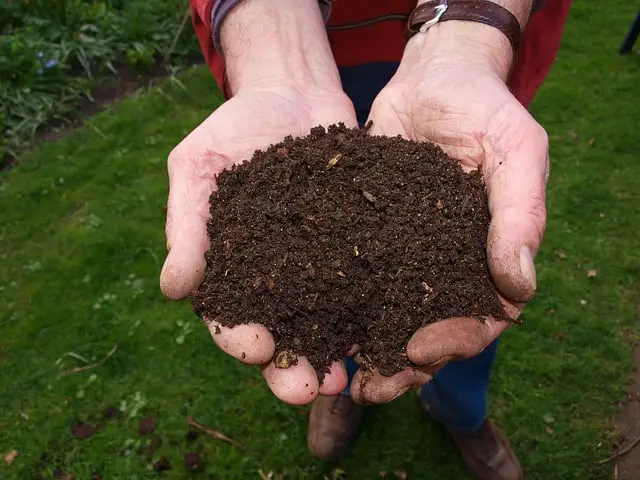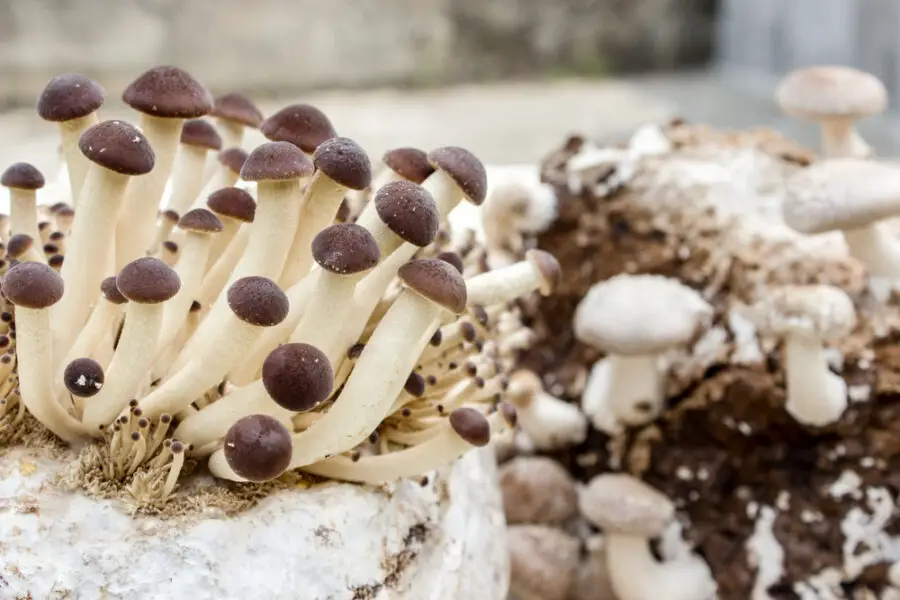Mycelium grows faster in the dark only because the conditions at nighttime are more suited to their growth. In the daytime, the air is less humid due to the sun’s UV radiation, which can slow Mycelium growth.
In this article we break down the fastest ways to cultivate Mycelium, the optimum conditions for their growth, and what the fastest growing strains are. If you’re not careful, we might just grow on you!
What conditions does Mycelium need to grow the fastest?
Fungi need warm, humid conditions for optimum Mycelium growth. If you live in a cold and dry area, try misting your substrate with a spray bottle, and using a heater to keep the temperature up.
Fungi can create their own heat as their Mycelium decomposes the substrate. This means your fungi can literally cook themselves to death if you heat them too much.
For example, researchers at the National Pingtung University of Science and Technology in Taiwan suggest Oyster mushrooms prefer around 82° F for optimum growth on a potato agar medium. Therefore, you should aim for around 76 – 80° F to avoid overheating.
Does Mycelium need light to grow?
The short answer is Mycelium don’t need light to grow. Unlike higher plants, the Mycelium of a fungi doesn’t produce energy from photosynthesis. Instead, they break down decomposing plant matter and uptake the nutrients through their hyphae.
However, nature is often much more complex than simple yes or no answers. While Mycelium don’t need light to grow, certain fungi such as Shiitake and Oyster mushrooms use light as a trigger to start producing fruiting bodies. The fruiting body is what is commonly referred to as a mushroom.
So, if you want to harvest fruiting bodies from your Mycelium, it’s best not to keep it in total darkness.
Does Mycelium grow faster in the dark?
Darkness doesn’t provide any special stimulus to boost Mycelium growth. Instead, the absence of light supports the humid conditions Mycelium needs to grow. Light or lack thereof is one of the least important factors to control when growing Fungi.
Controlling sources of contaminating microorganisms is the best way to ensure your Mycelium grows fast and produces lots of mushrooms.
Does sunlight affect Mycelium growth?
Intense sunlight can cause water vapor in the air to evaporate. This can dry out your Mycelium and cause unfavorable conditions for their growth. Besides this drying effect, the sun’s rays also contain UV light which can cause damage to Mycelium and fruiting bodies if they’re exposed to direct sunlight for too long.
As mentioned earlier, light is necessary to trigger fruiting, and so you’ll need to roughly mimic a day/night cycle if you plan to cultivate your fungi indoors. A timer controller can be used to turn LED lights on and off periodically to achieve this, which are quite cheap and easy to set up.
What type of Mycelium grows the fastest?
Mycelium of the Oyster mushroom is among the fastest growing of all fungi, and they produce a tasty fruiting body that can be used in cooking or even sold at a farmer’s market. The interesting thing about Mycelium is that some strains of the same species can be more rhizomorphic (faster growing) than others.
How can I make Mycelium colonize faster?
Usually, colonization of a substrate occurs in roughly 15 – 20 days. However, there are a few tips and tricks you can exploit to make your Mycelium achieve full colonization faster. Below is a list of several steps you can take to increase colonization speed.
- Use an agar plate to identify and isolate the fastest growing and most rhizomorphic Mycelium.
- Make a liquid culture of just this Mycelium and use that to begin colonization of your substrate.
- Ensure to colonize the substrate in layers: place the Mycelium culture on the substrate, put more substrate on top, etc. Like making a lasagna but much less tasty. This allows the Mycelium to grow separately and fuse into each other, speeding up the colonization process.
- Use a less nutrient dense substrate like straw, as this forces the Mycelium to become more rhizomorphic and grow faster, because it has to search for food.
- Supplementing your Mycelium with coffee has been shown to increase their growth rate. Simply soak the substrate in coffee before adding your fungi. That’s not really surprising when you realize humans share 50% of their DNA with Fungi!
How fast should Mycelium grow?
Mycelium can be slow to grow initially, especially in colder or less humid conditions. After about a week, growth should be exponential, and reach a plateau once the whole substrate becomes colonized.
If your Mycelium grows slowly or you don’t see any growth at all, there may be contamination present. Mold is the most common contaminant that can compete with your Mycelium for nutrients. Green Trichoderma or orange bread molds are usually the culprits you’ll have to deal with to keep your Mycelium happy and productive.
If you catch it early, spraying the mold with isopropyl alcohol can be enough to kill it. However, ensure to avoid touching it for a few hours as it can still release viable spores into the air.
How do I know my Mycelium is growing?
You should start to see small white hairs growing on the substrate after three to four days. These are the hyphae which will proliferate throughout the substrate in a tree branch-like web. If the hairs stop growing or you notice discoloration, the Mycelium is likely contaminated and you should discard it.
What’s the fastest method of cultivating Mycelium?
Generally, it’s not advised to rush Mycelium cultivation, as the results tend to be lackluster. If you already have a successful colonization, the fastest method to make a new colony is called ‘grain to grain’ transfer or G2G for short.
In this method, colonized grain/substrate is introduced into a new mycobag or jar full of substrate. It’s important to use fully sterilized tools to transfer the grain and break up the colonized grain to reduce contamination. Using this method, full colonization can be achieved in as little as 7 to 10 days.
Hi, I’m John Stephens, chief editor and writer for Totalgardener.com. I’ve been gardening and raising animals for over 15 years starting with a small backyard plot in Northern Virginia where I grew corn, potatoes, squash, and using a high mulch technique called the Ruth Stout Method. I also raised ducks and small mammals for meat and eggs in a movable pen similar to the ones used by Joel Salatin. I later moved to Colorado where I experimented with growing greens using aquaponics inside. I eventually added a microgreens setup and home sprouting operation. I’m excited to share everything I’ve learned plus more from the other local gardening and animal raising experts I know.



